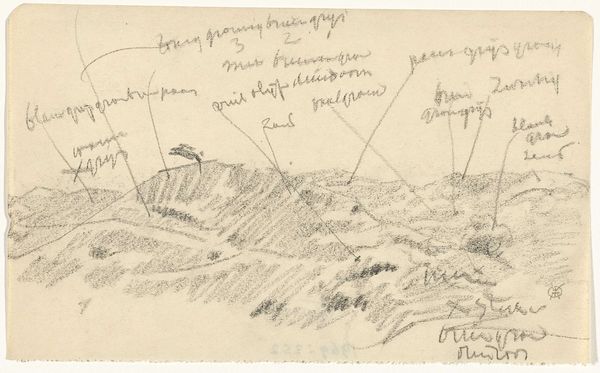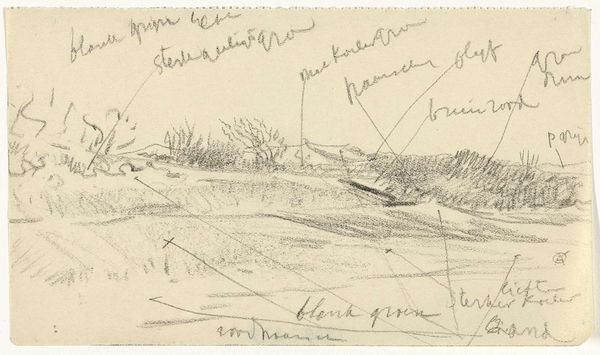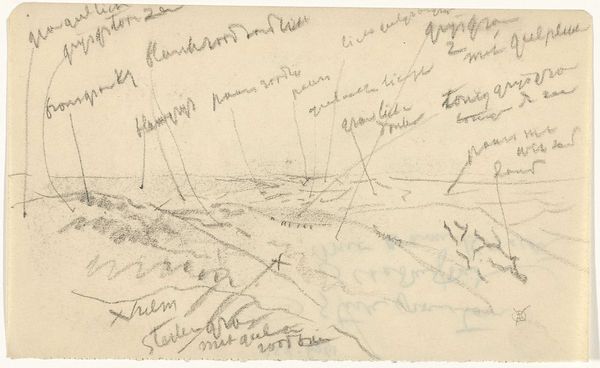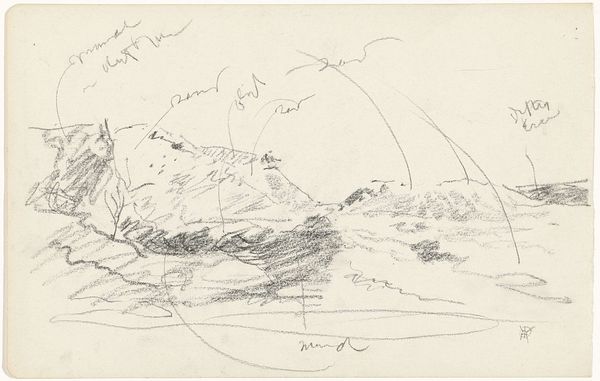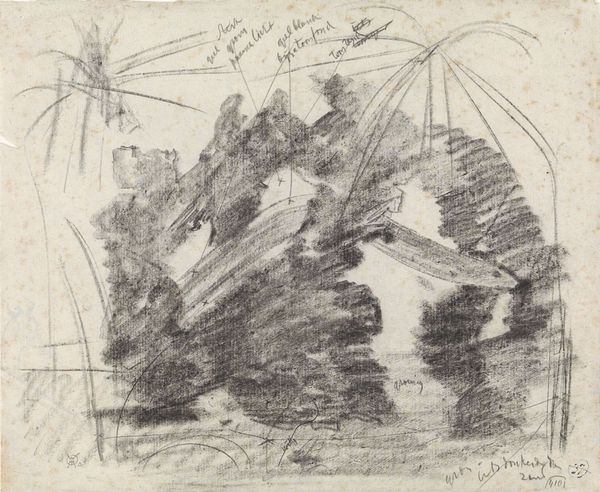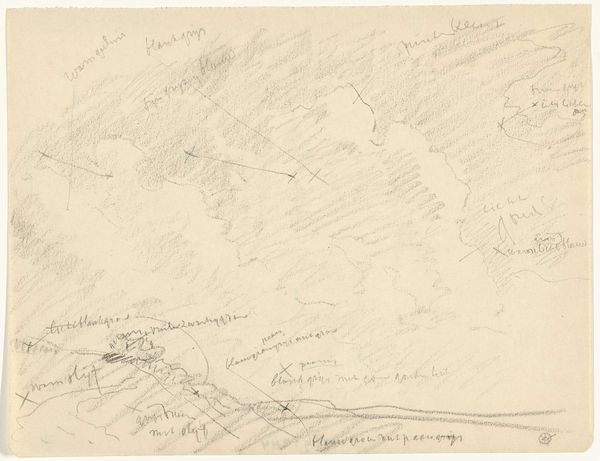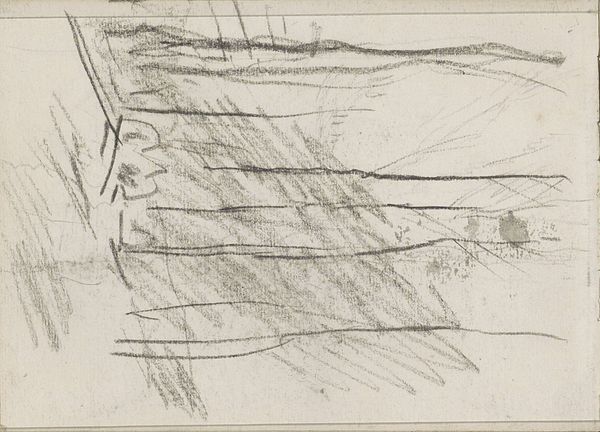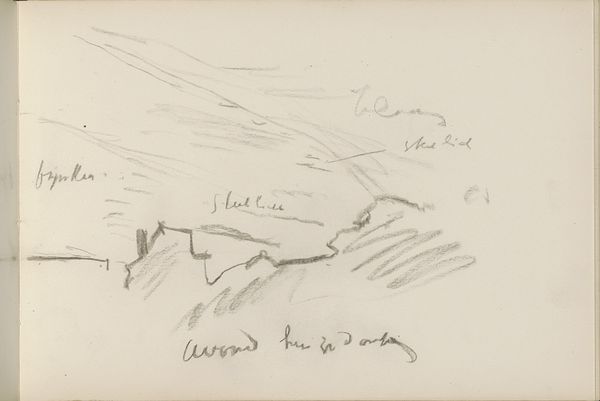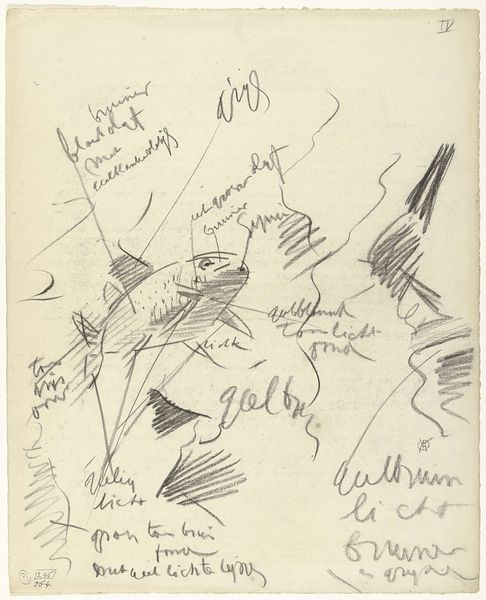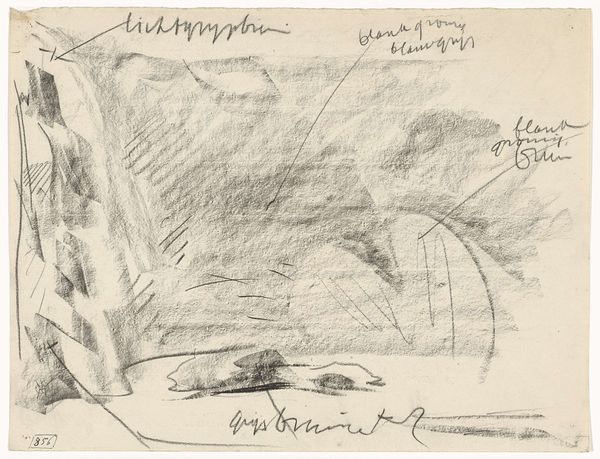
Dimensions: height 106 mm, width 175 mm
Copyright: Rijks Museum: Open Domain
Editor: We're looking at "Gezicht in de duinen, met kleurnotities," or "View in the Dunes, with Color Notes," a pencil drawing by Gerrit Willem Dijsselhof, sometime between 1876 and 1924. It has an airy, almost frantic quality to it, like a quickly captured impression. What catches your eye, or how do you interpret this work? Curator: Immediately, I’m struck by how this drawing serves as a document of its time. While appearing to be just a landscape sketch, its impressionistic style reflects a shift in artistic focus during the late 19th and early 20th centuries. Artists began to value personal sensory experiences, like quick sketches done en plein air, more than polished studio paintings. Note how the "color notes" written by the artist served the artist in capturing color as accurately as possible for a studio rendering at a later time. Editor: That's interesting. So, the sketch isn't just about capturing the scene but also about recording information for a future painting? Curator: Exactly. It highlights a changing relationship between the artist, nature, and the artwork itself. This drawing reveals the increasing influence of scientific thought on art, where direct observation and documentation become paramount. Editor: I hadn't considered the influence of scientific thought. How did institutions play a role in promoting this type of artwork? Curator: Institutions like the Rijksmuseum, where this piece resides, played a significant role in legitimizing these styles of art, validating the importance of the fleeting moment and the artist's personal vision. By collecting and exhibiting these pieces, museums shape public perception and reinforce their cultural value. Editor: So, the museum isn't just a space for finished masterpieces but also for sketches that show the artistic process. Curator: Precisely. It democratizes the notion of art by showing the artist's methodology and preliminary observations. Editor: I guess it changes the way you look at these kinds of sketches, understanding their historical context and purpose beyond the initial impression. Curator: It demonstrates how art can act as both a mirror to and a record of socio-cultural changes.
Comments
No comments
Be the first to comment and join the conversation on the ultimate creative platform.
